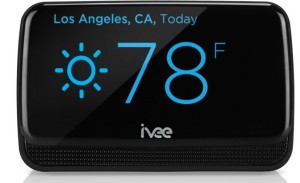I’m a right-brained, intuitive type (ENFP, if you’re keeping Myers-Briggs score…), and sometimes that pays off on issues involving technology & the general public, especially when the decidedly non-technical, primal issue of FEAR comes into the equation.
I used to do a lot of crisis management work with Fortune 100 companies, and usually worked with engineers, 95% of whom are my direct opposite: ISTJ. Because they are so left-brained, rational and analytical, it used to drive them crazy that the public would be so fearful of various situations, because peoples’ reaction was just so darned irrational!
I’m convinced that same split is a looming, and extremely dangerous problem for the Internet of Things: the brilliant engineers who bring us all these great platforms, devices and apps just can’t believe that people could be fraidy cats.
Let me be blunt about it, IOT colleagues: get used dealing with peoples’ fears. Wise up, because that fear might just screw the IoT before it really gains traction. Just because a reaction is irrational doesn’t mean it isn’t very, very real to those who feel it, and they might just shun your technology and/or demand draconian regulations to enforce privacy and security standards.
That’s why I was so upset at a remark by some bright young things at the recent Wearables + Things conference. When asked about privacy and security precautions (a VERY big thing with people, since it’s their very personal bodily data that’s at risk) for their gee-whiz device, they blithely said that they were just a start-up, and they’d get to security issues after they had the device technology squared away.
WRONG, KIDS: security and privacy protections have to be a key priority from the get-go.
That’s why I was pleased to see that CES asked FTC Chair Edith Ramirez to give opening remarks at a panel on security last week, and she specifically focused on “privacy by design,” where privacy protections are baked into the product from the get-go. She emphasized that start-ups can’t get off the hook:
“‘Any device that is connected to the Internet is at risk of being hijacked,’ said Ms. Ramirez, who added that the large number of Internet-connected devices would ‘increase the number of access points’ for hackers.
Ms. Ramirez seemed to be directing her remarks at the start-ups that are making most of the products — like fitness trackers and glucose monitors — driving the so-called Internet of Things.
She said that some of these developers, in contrast to traditional hardware and software makers, ‘have not spent decades thinking about how to secure their products and services from hackers.'”
I yield to no one in my love of serendipitous discoveries of data’s value (such as the breakthrough in early diagnosis of infections in neonates by researchers from IBM and Toronto’s Hospital for Sick Children, but I think Ms. Ramirez was on target about IoT developers forcing themselves to emphasize minimization of data collection, especially when it comes to personal data:
“Beyond security, Ms. Ramirez said that technology companies needed to pay more attention to so-called data minimization, in which they collect only the personal data they need for a specific purpose and delete it permanently afterward. She directly challenged the widespread contention in the technology industry that it is necessary to collect large volumes of data because new uses might be uncovered.
‘I question the notion that we must put sensitive consumer data at risk on the off chance a company might someday discover a valuable use for the information,’ she said.
She also said that technology companies should be more transparent about the way they use personal data and should simplify their terms of use.”
Watch for a major IoT privacy pronouncement soon from the FTC.
It’s gratifying that, in addition to the panel Ms. Ramirez introduced, that CES also had an (albeit small…) area for privacy vendors. As the WaPo reported, part of the reasons for this area is that the devices and apps are aimed at you and me, because “consumers are finding — thanks to the rise in identity theft, hacks and massive data breaches — that companies aren’t always good stewards for their information.” Dealing with privacy breaches is everyone’s business: companies, government, and you and me!
As WaPo reporter concluded: “The whole point of the privacy area, and of many of the products being shown there, is that technology and privacy don’t have to fight. They can actually help each other. And these exhibitors — the few, the proud, the private — are happy to be here, preaching that message.”
So, let’s all resolve that 2015 when privacy and security become as big an IoT priority as innovation!
Oh, before I forget, its time for my gratuitous reference whenever I discuss IoT privacy and security, to Gen. David Petraeus (yes, the very General “Do As I Say, Not As I Do” Petraeus who faces possible federal felony charges for leaking classified documents to his lover/biographer.), who was quite enamored of the IoT when he directed the CIA. That should give you pause, no matter whether you’re an IoT user, producer, or regulator!


